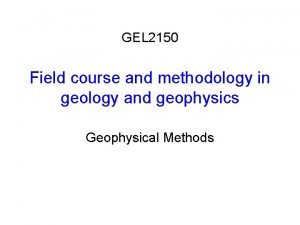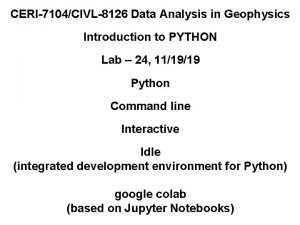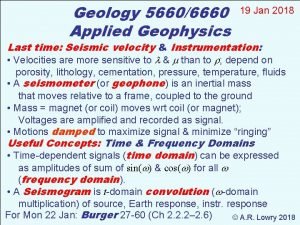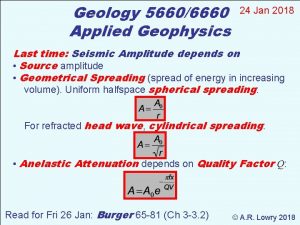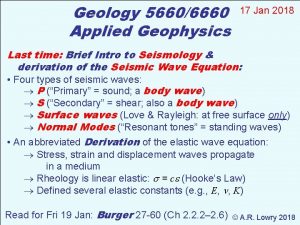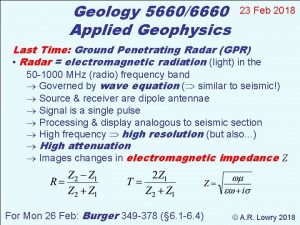Geology 56606660 Applied Geophysics 29 Jan 2018 Last







- Slides: 7

Geology 5660/6660 Applied Geophysics 29 Jan 2018 Last time: The Refraction Method: • For a single horizontal layer over a halfspace, observed travel-times for direct and refracted arrivals: give the velocities and layer thickness from t = mi x + bi as: • The crossover distance xco can be used in experiment design, to ensure adequate geophone sampling: • For an n-layer Earth: Read for Wed 31 Jan: Burger 106 -141 (§ 3. 7 -3. 11) © A. R. Lowry 2018

Direct arrival h ic V 1 Refracted arrival V 2 ?

Direct arrival hu ic hd V 1 Refracted arrival V 2 tud t 0 u md Refraction from a dipping interface: mu tdd t 0 d Now thickness changes with offset, so slope is no longer = inverse of layer velocity. Refer to as “apparent velocity”, and this is why we reverse our shots! After some trig & algebra, we get:

Like before, we have the observed travel-times and want to know the model parameters. We know V 1 from the direct arrival, & we know the slopes are: then we can solve for velocity V 2: and angle : The normal thicknesses use intercept times t 0 u, t 0 d: (Can get vertical distance from shot to top of layer by dividing hd or hu by cos ).

Aside: Solving for parameters in this way is a simple form of inversion of the data: Most geophysical (& geological, & other) problems can be expressed as: observations = some function of parameters, or (where the arrow denotes plural: a vector). Inverse theory, in which we seek to find is a very important part of geophysics!

Equations for multiple dipping layers can be derived using a similar (if slightly more algebraically complicated) approach to that we used for the multiple horizontal layer case [Adachi]: u 1 zu 2 d 1 i 1 u 2 i 2 d 2 2 3 (And these are the equations used in Refract…) V 1 V 2 V 3


